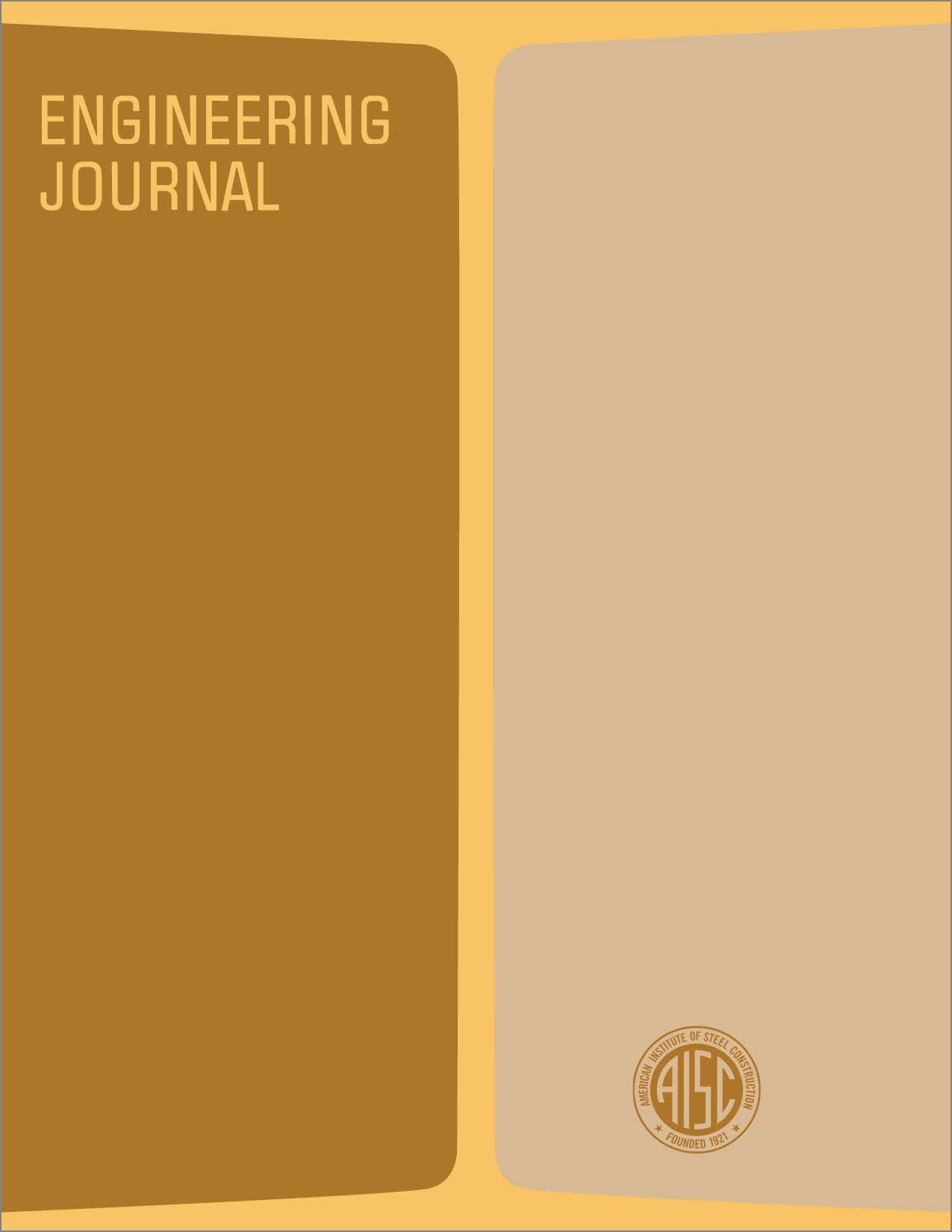Shear in Beam-Column Joints in Seismic Design of Steel Frames
DOI:
https://doi.org/10.62913/engj.v15i3.318Abstract
In unbraced steel frames, structural stability and resistance to lateral loads require the transfer of bending moments between beams and columns. Depending upon stiffness and strength requirements, this transfer of bending moments can be achieved by either semi-rigid or rigid beam-column connections. In both cases, the intersection between beams and columns (the beam-column joint) will be subjected to high shears whenever a significant unbalance of beam moments is present at the joint. A significant unbalance usually exists at exterior and corner joints, and at interior joints in the case of lateral load application such as wind or seismic effects. Somewhat simplified, the effect of an unbalance of beam moments on the moment and shear force diagram along the column is illustrated in Figs. 1a and 1b. Figure 1c shows the forces acting on a free body of an interior joint. The effect of the shear forces in joints must be accounted for in the design of frames. In the design for strength, the joints must be capable of transmitting the high shear forces through the columns in accordance with the selected design procedure, which may be based on allowable stresses or ultimate strength. In the design for stiffness, it may be necessary to verify that the joint distortions caused by the shear forces do not excessively affect the story drift under lateral loads.

